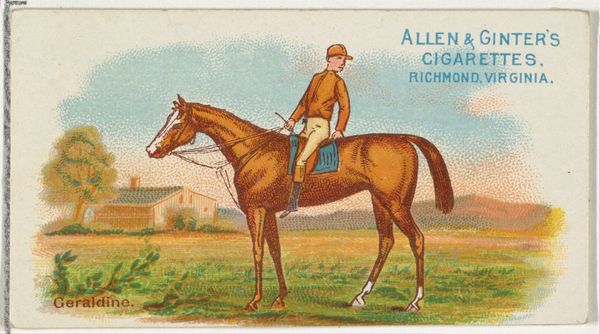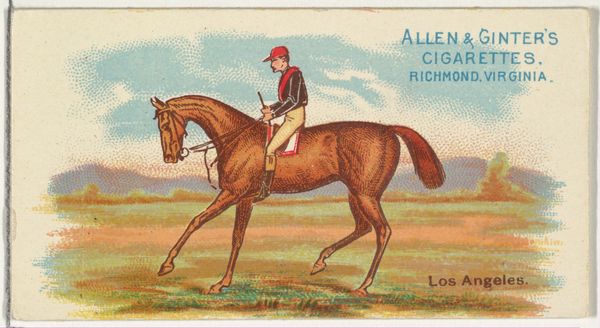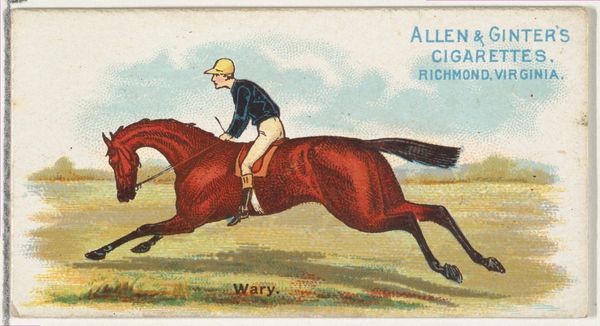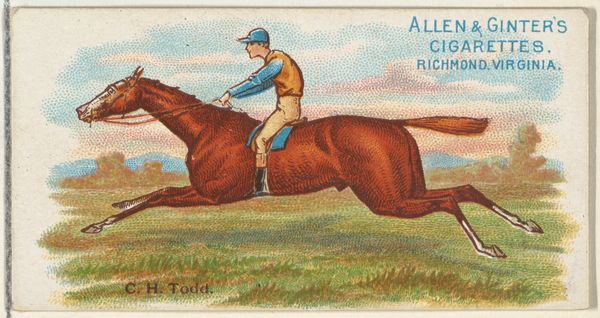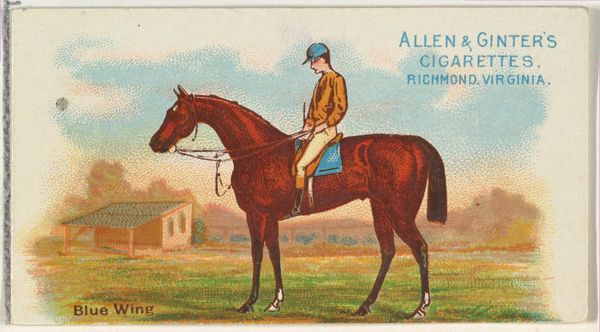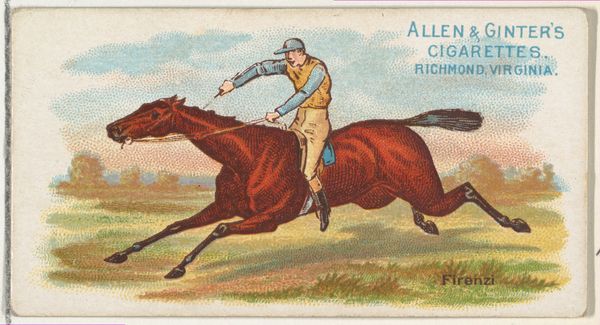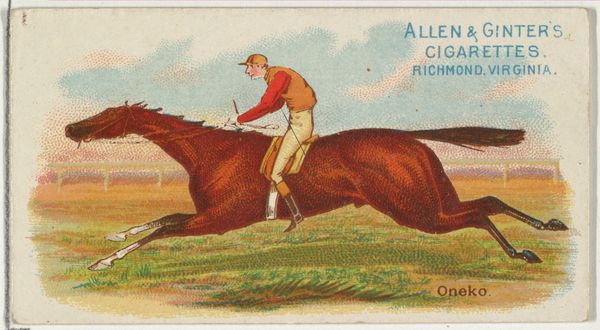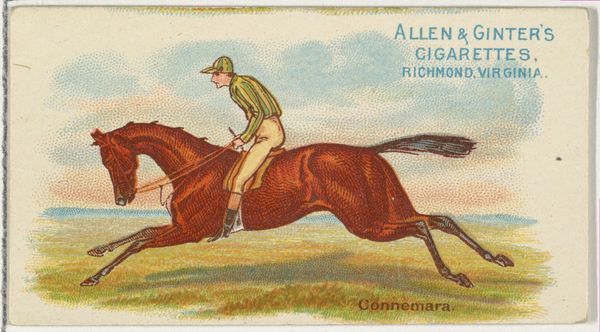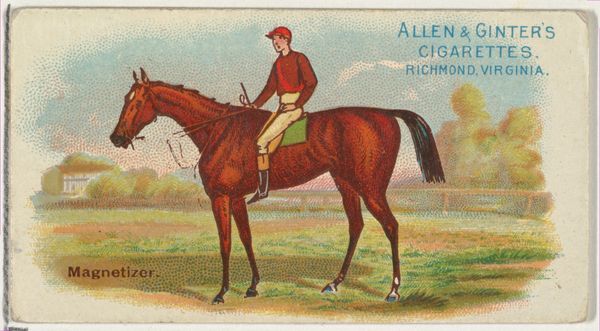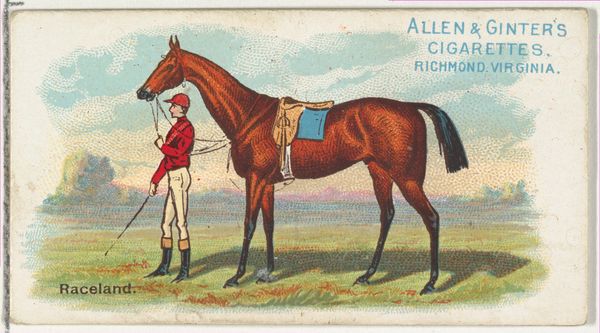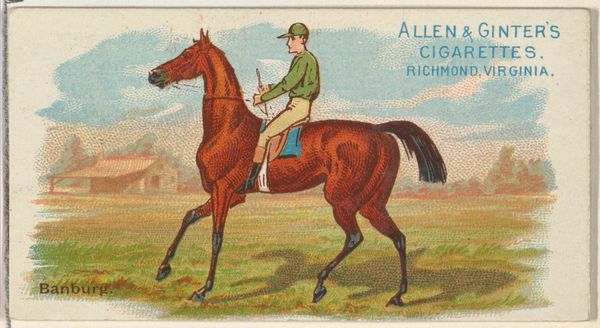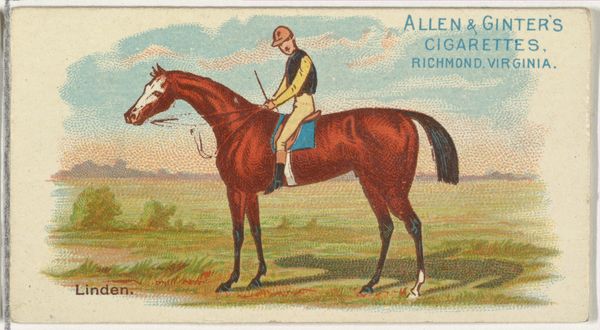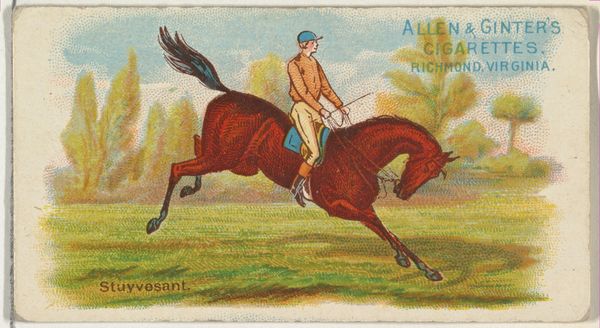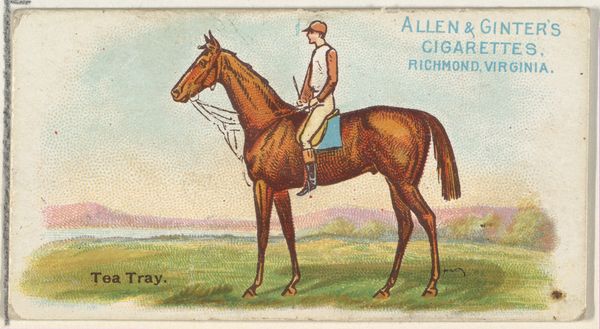
Carey, from The World's Racers series (N32) for Allen & Ginter Cigarettes 1888
0:00
0:00
drawing, coloured-pencil, print
#
drawing
#
still-life-photography
#
coloured-pencil
# print
#
impressionism
#
coloured pencil
#
horse
#
men
Dimensions: Sheet: 1 1/2 x 2 3/4 in. (3.8 x 7 cm)
Copyright: Public Domain
Curator: Look at this vibrantly colored print entitled "Carey, from The World's Racers series," part of a set produced by Allen & Ginter Cigarettes back in 1888. The medium involves a colored-pencil drawing, quite unusual for cigarette cards of that era. Editor: My first impression is the sense of speed and motion captured in such a small format. It’s dynamic, but there’s also a sort of rigid elegance. It feels both old and strangely immediate, as if a fleeting moment was preserved for consumption, both literally and figuratively, given its origin. Curator: Exactly. These cards were not meant as high art; they were inserts meant to stiffen cigarette packs and entice consumers. Consider the printing process involved—the industrialization of image-making and the distribution channels available to promote these products on a wide scale. The imagery celebrated the feats and successes of racehorses as another consumer product during America's gilded age. Editor: That context is vital. Horse racing in the late 19th century was a major spectacle, intertwined with gambling and masculine culture. By depicting Carey, they tapped into both the sporting world and broader themes around aspiration, spectacle, and the commodification of athleticism and prestige. Who got to participate, whose labor and skill was being consumed… all pertinent questions. Curator: The choice of colored pencil is interesting, too. It’s a relatively inexpensive and accessible medium that lends itself well to mass reproduction. This lowers production costs while mimicking the look of watercolor illustrations—it also provided an element of artistry accessible to consumers, suggesting a refined elegance appealing to their aspirations. Editor: And Allen & Ginter Cigarettes, based in Richmond, Virginia, operated in a region grappling with its identity in the wake of the Civil War. Promoting an idealized vision of sports figures possibly allowed for narratives that shifted the focus away from uncomfortable societal realities towards a vision of unity or, perhaps, just profitable leisure. Curator: Indeed. By framing athletes like Carey through collectible cards, the brand promoted consumerism while cementing social values around competition and sporting celebrity. The manufacturing and material qualities themselves reflect the industrialization transforming society then. Editor: Reflecting on this tiny card, it highlights how commercial items carry layers of social meaning. It speaks of labor, sport, leisure, consumption—all coded in the image and distribution. It’s a lens for viewing broader trends, captured within something meant to be so transient. Curator: Precisely. A study of consumer culture can uncover larger histories through what something is constructed from, and how. Editor: I agree; considering how a small everyday object encapsulates these socio-historical conditions lets us look deeper into the culture around it.
Comments
No comments
Be the first to comment and join the conversation on the ultimate creative platform.
